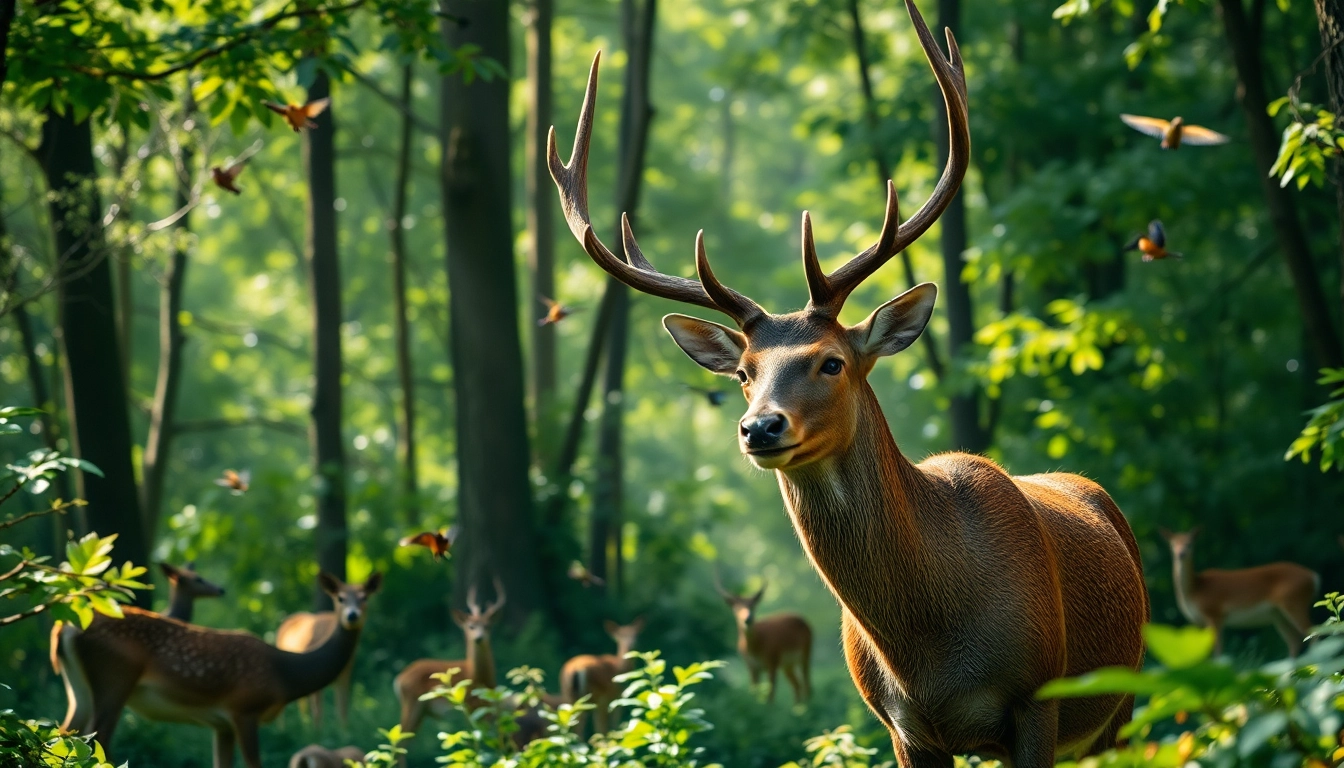1. Understanding the Importance of Wildlife Conservation
Wildlife conservation is critical to maintaining the balance of ecosystems and supporting biodiversity. As human activities increasingly impact natural habitats, recognizing the importance of preserving wildlife is more urgent than ever. Various organizations, such as www.sudswild.com, are dedicated to these efforts, aiming to foster a harmonious relationship between humans and wildlife.
1.1 Overview of Wildlife Conservation Efforts
Wildlife conservation encompasses a wide range of activities designed to protect endangered species and their habitats. It includes the establishment of protected areas, creating awareness programs, and lobbying for stronger legislation to safeguard natural environments. Global initiatives, such as the Convention on Biological Diversity, encourage nations to develop strategic plans for conservation that address the specific needs of their local flora and fauna.
1.2 Benefits to Ecosystems and Biodiversity
The benefits of wildlife conservation extend beyond the protection of individual species. Healthy ecosystems provide essential services such as clean water, air purification, and pollination of crops. A diverse range of species contributes to resilience against environmental changes, thereby sustaining ecological balance. Conservation efforts also play a crucial role in protecting genetic diversity, which can be vital for agricultural development and medical research.
1.3 The Role of Organizations like www.sudswild.com
Organizations like www.sudswild.com play a pivotal role in wildlife conservation by conducting research, mobilizing volunteers, and advocating for policy changes. They provide resources and educational materials aimed at raising awareness about the importance of wildlife protection. Furthermore, these organizations play a key role in funding conservation projects that can have lasting impacts on local communities and ecosystems.
2. Highlights of Species Diversity in Nature
The diversity of species found in nature is a testament to the planet’s evolutionary history and ecological complexity. From towering trees to microscopic organisms, every species contributes uniquely to the ecological tapestry. Understanding this diversity is essential for targeted conservation efforts.
2.1 Key Species to Protect and their Roles
Some species are considered keystone species due to their critical role in maintaining the structure of their ecosystems. For example, wolves in Yellowstone National Park regulate the population of herbivores, which in turn affects vegetation and overall ecosystem health. Protecting these species not only preserves their existence but also maintains the balance necessary for broader biodiversity.
2.2 Impact of Habitat Loss on Wildlife
Habitat loss is one of the leading causes of wildlife decline. Urbanization, agriculture, and deforestation lead to fragmented ecosystems that can no longer support diverse life. Endangered species struggle to find food, mates, and shelter, while invasive species often fill ecological gaps, posing further threats to native wildlife. Understanding the nuances of habitat restoration can be essential for successful conservation strategies.
2.3 Case Studies: Successful Conservation Projects
Various case studies illustrate successful wildlife conservation efforts. For instance, the recovery of the American bald eagle from the brink of extinction in the 1970s showcases the effectiveness of federal legislation like the Endangered Species Act. Similarly, the reintroduction of gray wolves in Yellowstone has restored ecological balance, demonstrating the importance of apex predators in ecosystems.
The Growing Threats to Wildlife
As the human population continues to expand, wildlife faces unprecedented threats that jeopardize survival. From climate change to pollution, understanding these pressures is crucial for developing effective conservation strategies.
3.1 Climate Change and Its Effects
Climate change represents one of the biggest challenges for wildlife conservation today. Rising temperatures and altered precipitation patterns disrupt habitats, making it difficult for species to adapt. Many species face extinction as changing climates reduce their ecological niches. Furthermore, migratory patterns are affected, with some species arriving at breeding grounds either too early or too late, leading to decreased reproductive success.
3.2 Human Activities: Pollution and Overexploitation
Human activities such as pollution and overexploitation severely threaten wildlife. Water and air pollution can result in habitat degradation and food source contamination, while practices like overfishing lead to population crashes in marine ecosystems. Responsible resource management is essential to prevent long-term ecological damage and ensure the sustainability of wildlife populations.
3.3 The Importance of Raising Awareness on www.sudswild.com
Raising awareness about these threats is imperative for mobilizing community action and funding for conservation initiatives. Platforms like www.sudswild.com provide critical information and educational resources, helping individuals understand how their actions impact wildlife. By fostering education and engagement, these organizations can facilitate meaningful change at both local and global levels.
4. How You Can Contribute to Conservation Efforts
Everyone has a role to play in wildlife conservation, and there are numerous ways individuals can actively contribute to these crucial efforts. From supporting initiatives financially to volunteering, every action counts.
4.1 Supporting Conservation Programs and Initiatives
Financial support is vital for the success of conservation programs. Donating to organizations dedicated to wildlife protection enables them to conduct research, implement conservation actions, and raise awareness in communities. Individuals can also choose to support businesses that prioritize sustainable practices, helping create an economic environment that favors conservation.
4.2 Volunteer Opportunities in Wildlife Protection
Volunteering is another impactful way to contribute to wildlife conservation. Opportunities range from participating in hands-on habitat restoration projects to assisting with research or educational outreach. Engaging with local conservation groups allows individuals to gain valuable insights into the complexities of conservation while actively supporting these initiatives.
4.3 Educating Others and Spreading the Word through www.sudswild.com
Education plays a significant role in driving conservation efforts. By sharing information learned from resources like www.sudswild.com, individuals can encourage their communities to take part in conservation activities. Social media platforms can be powerful tools for raising awareness and mobilizing support for wildlife initiatives.
5. Future of Wildlife Conservation
The future of wildlife conservation will depend heavily on innovative approaches to addressing existing challenges. By leveraging new technologies and fostering collaboration, there is potential for significant advancements in conservation efficacy.
5.1 New Technologies in Conservation Science
Technological advancements such as remote sensing, drone surveillance, and environmental DNA (eDNA) assessments provide researchers with powerful tools for wildlife conservation. These technologies enhance our ability to monitor biodiversity, assess habitat conditions, and study population dynamics without disturbing natural ecosystems. As these technologies become more accessible, they promise to revolutionize conservation practices.
5.2 Policy Changes and Their Potential Impact
Policy changes at local, national, and global levels can significantly influence conservation outcomes. Promoting policies that support habitat protection, sustainable land use, and stricter regulations on pollution and resource extraction can bolster wildlife conservation efforts. Advocacy for conservation-focused policies is essential for ensuring long-term protection of natural habitats.
5.3 Envisioning a Collaborative Future for Wildlife
Collaboration between governments, NGOs, and local communities is crucial for successful wildlife conservation. Engaging stakeholders in decision-making enhances the chances of implementing effective conservation strategies that respect both environmental needs and human livelihoods. By working together, we can build a more sustainable future for wildlife and create synergies that promote biodiversity and ecosystem health.



